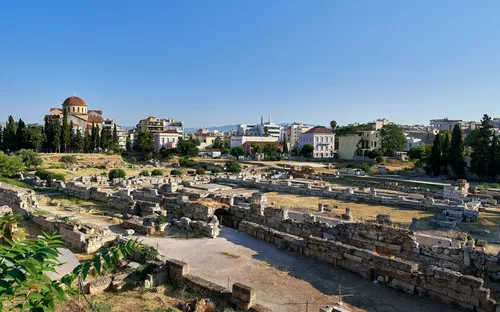Kerameikos Cemetery and its collection
The district of Kerameikos was divided into two by the Wall of Themistocles. The area outside the walls became the largest necropolis of the city. This historical division and the presence of the necropolis provide a unique insight into the ancient city's layout and burial practices, making it a point of interest for visitors.
Excavations at Kerameikos
Excavations in the district of Kerameikos began in 1870, carried out by the Archaeological Service of Athens. The work was later continued by the German Archaeological Institute. Today, the excavation site is open to visitors, offering a unique opportunity to explore the historical and archaeological significance of the area.
What to See at Kerameikos
Visitors to Kerameikos can see a part of the ancient city wall, including the foundations of the Dipylon Gate, the Sacred Gate, and the Pompeion. A section of the cemetery, complete with tomb monuments, is also accessible. Additionally, artifacts discovered in the area are displayed in the Kerameikos Museum, providing a comprehensive view of the district's historical and cultural significance.
History & Anthropology Archaeology Ancient art Historic house
#5 History & Anthropology in Greece #3 Ancient art museums in Greece #5 Archaeology museums in Greece #2 Historic houses in Greece #5 History & Anthropology in Athens #3 Ancient art museums in Athens #5 Archaeology museums in Athens #2 Historic houses in Athens #57 Ancient art museums in Europe #62 Archaeology museums in Europe





















